I have a question for you please :
My data :
Nb_obs <- as.vector(c( 2, 0, 6, 2, 7, 1, 8, 0, 2, 1, 1, 3, 11, 5, 9, 6, 4, 0, 7, 9))
Nb_obst <- as.vector(c(31, 35, 35, 35, 39, 39, 39, 39, 39, 41, 41, 42, 43, 43, 45, 45, 47, 48, 51, 51))
inf20 <- as.vector(c(2, 2, 2, 2, 3, 3, 3, 3, 3, 3, 3, 3, 3, 4, 3, 4, 4, 3, 5, 4))
sup20 <- as.vector(c(3, 4, 4, 4, 5, 4, 4, 5, 4, 4, 5, 5, 5, 6, 5, 6, 6, 5, 7, 6))
inf40 <- as.vector(c(1, 2, 2, 2, 2, 2, 2, 2, 2, 2, 2, 2, 2, 3, 2, 3, 3, 3, 4, 3))
sup40 <- as.vector(c(4, 5, 5, 5, 6, 5, 5, 6, 5, 5, 6, 6, 6, 7, 6, 7, 7, 7, 9, 7))
inf60 <- as.vector(c(1, 1, 1, 1, 2, 1, 1, 1, 1, 1, 1, 1, 2, 2, 2, 2, 2, 2, 3, 2))
sup60 <- as.vector(c(5, 6, 6, 6, 8, 7, 7, 7, 7, 7, 7, 7, 8, 9, 8, 9, 9, 9, 11, 9))
inf90 <- as.vector(c(0, 0, 0, 0, 0, 0, 0, 0, 0, 0, 0, 0, 0, 1, 0, 0, 1, 0, 1, 1))
sup90 <- as.vector(c(10, 11, 11, 11, 15, 13, 13, 14, 12, 13, 13, 13, 14, 17, 15, 17, 17, 16, 21, 18))
data <- cbind.data.frame(Nb_obs, Nb_obst, inf20, sup20, inf40, sup40, inf60 , sup60, inf90 , sup90)
My plot :
plot(data$Nb_obst, data$Nb_obs, type = "n", xlab = "Number obst", ylab = "number obs", ylim = c(0, 25))
lines(data$Nb_obst, data$inf20, col = "dark red")
lines(data$Nb_obst, data$sup20, col = "dark red")
lines(data$Nb_obst, data$inf40, col = "red")
lines(data$Nb_obst, data$sup40, col = "red")
lines(data$Nb_obst, data$inf60, col = "dark orange")
lines(data$Nb_obst, data$sup60, col = "dark orange")
lines(data$Nb_obst, data$inf90, col = "yellow")
lines(data$Nb_obst, data$sup90, col = "yellow")
My question :
There are two things I'd like to do (and so I think it could be done by ggplot):
In the idea of the graph at the top, the "inf" and "sup" are limits of my model in the IC 20%, then 40%, then 60%, and finally 90%. I would first like to smooth each curve, and then I would like to color the surface between two curves of the same IC, for example that the surface between "data$inf90" and "data$sup90" is yellow, the area between "data$inf60" and "data$60" is orange, etc. And I would like to superimpose each of these colored surfaces + put the good legend please.
Thanks for your help !



